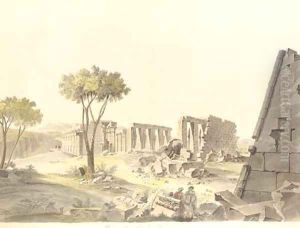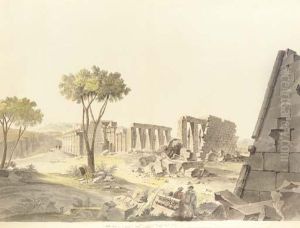Charles-Louis Balzac Paintings
Charles-Louis Balzac was a French architect, born in 1752. He was not as widely known as some of his contemporaries, and he should not be confused with the famous French novelist Honoré de Balzac. Charles-Louis Balzac's contributions to architecture during his time were modest, and as a result, there is not a wealth of information about his life and work.
Balzac lived through a tumultuous period in French history, which included the latter part of the reign of Louis XV, the entire reign of Louis XVI, the French Revolution, the Napoleonic era, and the restoration of the French monarchy in the person of Louis XVIII. Despite the significant political and social upheavals of the time, Balzac managed to pursue his career in architecture.
He worked primarily in Paris and was known to have been involved in the construction and renovation of several buildings during his career. However, given the limited historical records, specific details about these projects are scarce. Balzac's architectural style would have been influenced by neoclassicism, which was the dominant artistic movement of his time, characterized by a return to classical orders, symmetry, and proportion based on the architecture of ancient Greece and Rome.
Charles-Louis Balzac's death occurred in 1820. His legacy, unlike that of architects like Jacques-Germain Soufflot or Claude-Nicolas Ledoux, is less prominent in the annals of French architectural history. Nevertheless, he contributed to the architectural landscape of his country during a period of significant change and development.

